Retro Replay Review
Gameplay
Plue no Daibōken places you firmly in control of Plue, the lovable companion from Hiro Mashima’s Groove Adventure Rave universe. The core mechanics follow classic side-scrolling platform conventions: running, jumping, and stomping enemies. At first glance, the controls feel immediately familiar, leaning heavily into the tried-and-true formula established by genre staples. However, what sets this title apart is the cleverly integrated candy system, which adds layers of strategy and exploration beyond simple hop-and-bop action.
(HEY YOU!! We hope you enjoy! We try not to run ads. So basically, this is a very expensive hobby running this site. Please consider joining us for updates, forums, and more. Network w/ us to make some cash or friends while retro gaming, and you can win some free retro games for posting. Okay, carry on 👍)
The lollipop power-ups are a highlight, offering more than just temporary invincibility or speed boosts. With over 100 candy varieties scattered throughout stages, each pick-up can alter Plue’s abilities in surprising ways—one candy will summon an arrow above his head to guide you to secret exits, while another restores health or temporarily grants higher jumps. This encourages players to thoroughly explore every nook and cranny in search of rare sweets, turning each level into a miniature scavenger hunt that rewards curiosity.
Enemies are dispatched by the evergreen mechanic of jumping on their heads, but a handful of later stages demand precise timing and agility. The difficulty curve is measured: early levels ease you in, while mid-game sections introduce underwater sequences that modify physics and require patience to navigate. Scattered checkpoint flags and occasional health-restoring candies strike a good balance, ensuring that bosses remain challenging without becoming outright frustrating.
Boss encounters break up the platforming rhythm and test all the skills you’ve honed so far. Each boss battle—whether against a burly aquatic foe in the submerged caverns or a giant mechanized creature on open ground—relies on pattern recognition and quick reflexes. Between these skirmishes, light puzzle elements appear, such as switching levers to open gates or manipulating temporary platforms with special candy effects, adding welcome variety to the core action.
Graphics
The visual presentation of Plue no Daibōken captures the spirit of Hiro Mashima’s original manga while tailoring it to the limitations and strengths of a side-scrolling adventure. Character sprites are charmingly detailed, with Plue’s expressive eyes and signature floppy ears faithfully rendered in vibrant pixel art. Animation frames flow smoothly, lending a sense of weight to Plue’s jumps and landings that feels satisfying under your control.
Each environment boasts a distinct theme, from verdant forests and rocky plateaus to shadowy underwater grottos and bubble-lit caverns. Background layers scroll at varying speeds, creating a subtle parallax effect that enhances depth without overwhelming the action. Bright candy icons pepper the foreground, standing out against earthy backdrops and making item collection an instantly gratifying visual reward.
Enemy designs run the gamut from mischievous slimes to crab-like guardians, each sporting bold colors and simple but expressive movements. Boss characters are rendered at larger scales, filling the screen with their imposing forms and memorable attack animations. Occasional full-screen flourishes—such as candy explosions when a rare lollipop is consumed—add moments of visual flair that punctuate the gameplay loops.
While the graphical style leans retro, it never feels outdated. The developers have struck a fine balance between nostalgia and polish, ensuring that each pixel feels deliberate. Color palettes remain bright without becoming garish, and visual clarity is never sacrificed; on-screen elements are easily distinguishable, even when the action grows hectic.
Story
Unlike sprawling RPG adaptations, Plue no Daibōken opts for a streamlined narrative approach that places emphasis on lighthearted questing over deep exposition. You step into Plue’s paws as he sets out on a mission to find scattered Rave stones (briefly hinted at through text snippets) and reunite with characters from the manga. The plot unfolds through concise cutscenes rendered in sprite-based panels, accompanied by simple text captions that capture the charming banter fans of the series will recognize.
While the storyline doesn’t venture into the more dramatic arcs of Groove Adventure Rave, it weaves in familiar faces and locales. Occasional NPC encounters provide context for each zone—residents of a seaside village plea for help clearing out aquatic monsters, while forest dwellers seek deliverance from an infestation of candy-coveting pests. These vignettes offer enough flavor to lend purpose to each stage without bogging the pace down.
The game’s minimalistic dialogue style is accessible even to newcomers, but it rewards franchise fans with subtle references and in-jokes that resonate. If you’ve followed Plue’s journey alongside Haru Glory in the manga or anime, seeing him tackle solo adventures feels like a playful detour rather than a full-scale sequel. This approach ensures that the narrative complements the gameplay instead of overshadowing it.
Ultimately, the story serves as a gentle backdrop—a series of light motivations that justify Plue’s odyssey from one candy-filled land to the next. It may not break new ground narratively, but it maintains the upbeat, whimsical tone that made the original series endearing.
Overall Experience
Plue no Daibōken shines as a delightful platformer that marries nostalgia for Hiro Mashima’s Groove Adventure Rave with inventive mechanics. The blend of classic enemy-stomping action, collectible candy power-ups, and exploration-focused design ensures that each stage remains engaging from start to finish. Whether you’re chasing after every lollipop variant or racing to clear levels under time constraints, the core gameplay loop stays fresh through the game’s duration.
Fans of the manga and anime will appreciate the faithful depiction of Plue and the cameo appearances of series-related characters, while newcomers can simply enjoy a well-crafted platform adventure. The learning curve is gentle enough for younger audiences or platforming novices, yet sprinkled with tougher sections and challenging boss battles that reward seasoned players. Replay value is bolstered by hidden secrets, optional time trials, and a desire to collect all 100+ candy types.
Audio design complements the visuals with upbeat, catchy tunes that echo classic 16-bit era compositions. Sound effects are crisp and satisfyingly punchy, from the “boing” of Plue’s jump to the “plink” of lollipop pickups. The overall presentation feels cohesive and polished, demonstrating clear attention to detail despite the game’s modest scope.
In summary, Plue no Daibōken from Groove Adventure Rave offers a charming, accessible platforming experience brimming with heart and inventiveness. Its blend of nostalgic franchise appeal and cleverly designed mechanics makes it a worthwhile purchase for anyone seeking a bite-sized adventure with plenty of sweet surprises.
 Retro Replay Retro Replay gaming reviews, news, emulation, geek stuff and more!
Retro Replay Retro Replay gaming reviews, news, emulation, geek stuff and more!
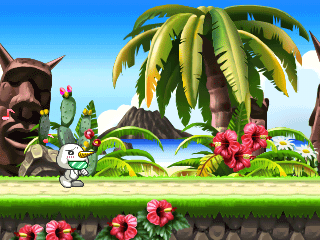
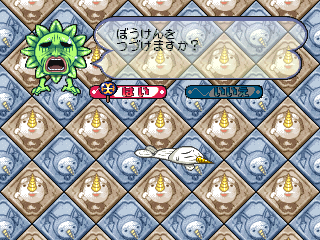
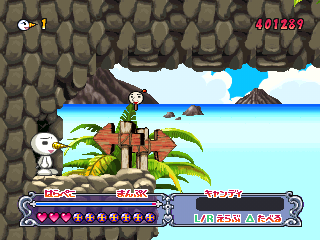
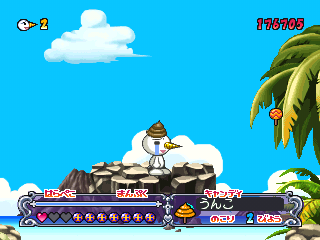
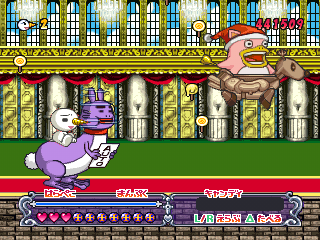

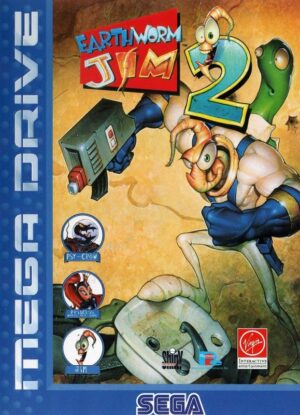

Reviews
There are no reviews yet.